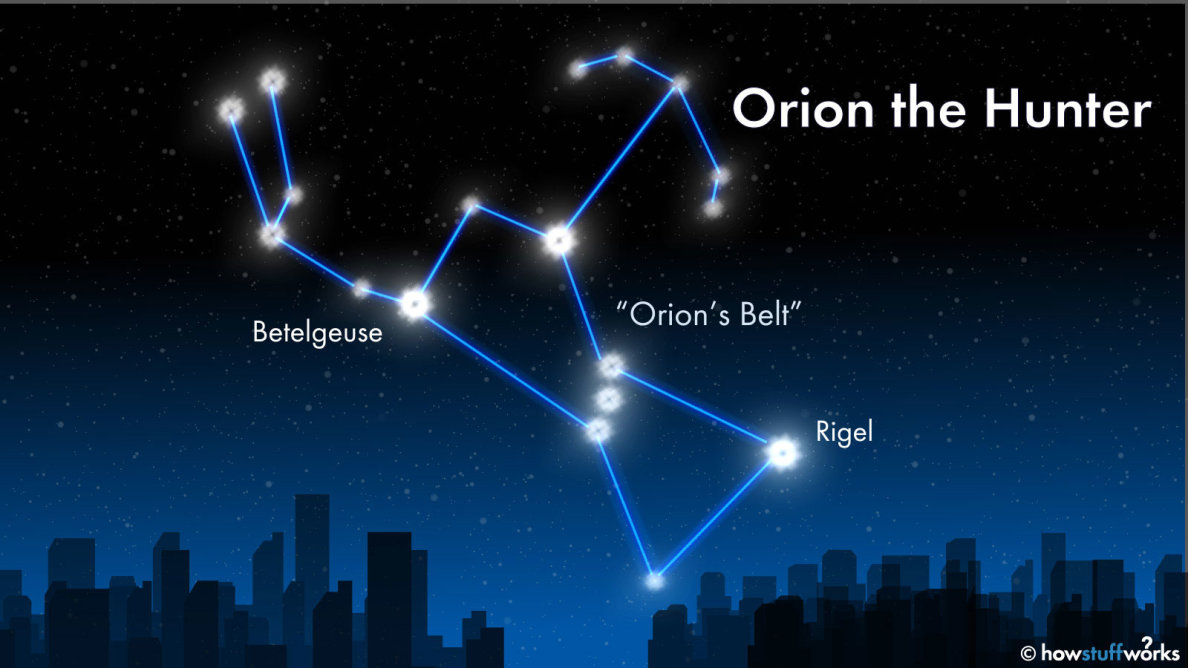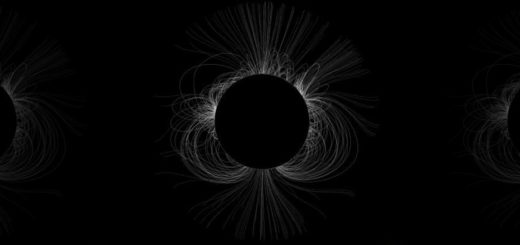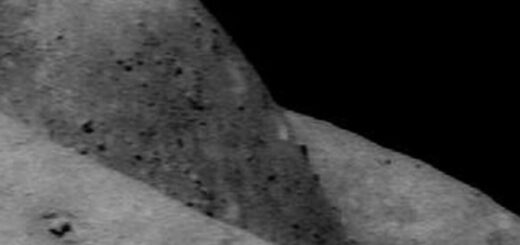How to Find Orion’s Belt in the Night Sky

As you learn more about the night sky, you’ve undoubtedly noticed three stars, equidistant from one another, that shine brightly as they pass overhead each night between October and March. These three stars are Orion’s Belt, part of the constellation Orion, the Hunter. To many ancient people, the pattern of Orion looked like the figure of a human with an arrow, and the three stars were the belt around the figure’s waist.
Each star has its own name: Mintaka, Alnilam and Alnitak. Though they are different types of stars, distant from Earth, and distant from one another, our perspective makes them appear as an asterism (a shape made of stars that aren’t officially a constellation) that is welcomingly familiar to anyone who enjoys stargazing. All three stars are several times larger and brighter than our sun.
Due to its bright, recognizable form, Orion’s Belt has been one of the most consistently documented asterisms in the night sky throughout human history.
Orion’s Belt in History and Myth
Orion’s Belt – along with another well-known asterism, the Pleiades, are mentioned in two books of the Bible: the Book of Job and the Book of Amos. Alfred Tennyson’s poem, “The Princess” describes Orion’s Belt as “those three stars of the airy Giant’s zone.” One Greek myth says that Orion the Hunter was chasing the Pleiades (seven sisters) on Earth and Zeus put them in the sky for safety. Orion is still chasing them there.
In Western culture, you may sometimes hear Orion’s Belt referred to as the Three Kings in a biblical reference or the three sisters. In Chinese mythology, Orion’s Belt is known as The Weighing Beam. The asterism is mentioned in other cultural stories and mythologies too, from locations as varied as northwestern Mexico, Finland and India. The Greek astronomer Ptolemy included Orion as one of the 48 original constellations in the second century.
Orion’s Belt
Orion’s Belt is one of the brightest and most recognizable constellations.
JAMES STONE/GETTY IMAGES
Spotting Orion’s Belt in the Night Sky
You’ve probably seen Orion’s Belt even if you don’t know anything about astronomy. The constellation Orion is visible at night across most of the globe during the winter months in the Northern Hemisphere; during the summer months, it is in the sky during daylight hours when the sun makes it impossible to see. (These seasons are reversed if you are viewing Orion from the Southern Hemisphere.)
Orion’s Belt is located on the celestial equator (an imaginary circle around the sky that is directly above Earth’s equator), which means it rises high in the sky during those cold winter months with dark skies that are perfect for stargazing. Orion rises in the east and sets in the west, starting at mid-evening (midway between sundown and midnight). It rises four minutes earlier each day, or two hours earlier each month, according to EarthSky.
Orion’s Belt is easy to find because it is bright, and the stars in the asterism appear to be equally distant from one another based on our earthly perspective. In fact, the stars and star systems that comprise Orion’s Belt are light-years apart and far distant from us (between 1,200 and 2,000 light-years away from us). As humans, our love of finding patterns and organization is what led ancient astronomers to include Orion’s Belt in one of the winter sky’s most clear constellations.
To spot it, look for the hourglass shape of Orion and the three stars that create the narrow part of the hourglass form Orion’s Belt. In late November, Orion appears to be lying on his side, with the three stars of the belt pointing upward, in the Northern Hemisphere.
Using Orion’s Belt to Find Other Stars
Orion’s Belt is a helpful asterism for finding the constellation it is part of, Orion, but it is also useful for finding other notable stars in the sky. There are three bright stars you can find using Orion’s Belt to guide you.
First, you can use Orion’s Belt to find Sirius, the brightest star in the sky. Sirius is just 8.6 light-years from Earth and sits in the constellation Canis Major, which is part of why it is sometimes called the “Dog Star.” To find it using Orion’s Belt, find the rightmost star in Orion’s Belt (Mintaka) and follow the asterism to the east. Continue from Orion’s Belt drawing a straight line until you reach a bright star – that’s Sirus.
Another noticeable star you can find using Orion’s Belt is Aldebaran, a red giant star located in the constellation Taurus. To identify Aldebaran, follow Orion’s Belt in the opposite direction (from east to west) from how you identified Sirius. Aldebaran has a reddish hue to help you know you’re looking at the right star.
Last, but certainly not least, you can use Orion’s Belt to identify two other bright stars in the constellation Orion: Betelgeuse and Rigel. Betelgeuse, another reddish star is usually the tenth-brightest star in the night sky (it’s also a variable star so it sometimes dims and loses that spot on the list), whereas Rigel is a blue supergiant and ranks No. 7 on the brightest stars in the sky. To find each one, look to the north of Orion’s Belt to spot Betelgeuse, and equally distant to the south to find Rigel.



 Creators of mankind
Creators of mankind Description of “Tall white aliens”
Description of “Tall white aliens” Where they came from?
Where they came from? About hostile civilizations
About hostile civilizations The war for the Earth
The war for the Earth “Tall white aliens” about eternal life
“Tall white aliens” about eternal life Video: “Nordic aliens”
Video: “Nordic aliens” Aliens
Aliens Alien encounters
Alien encounters The aliens base
The aliens base UFO
UFO Technology UFO
Technology UFO Underground civilization
Underground civilization Ancient alien artifacts
Ancient alien artifacts Military and UFO
Military and UFO Mysteries and hypotheses
Mysteries and hypotheses Scientific facts
Scientific facts


















